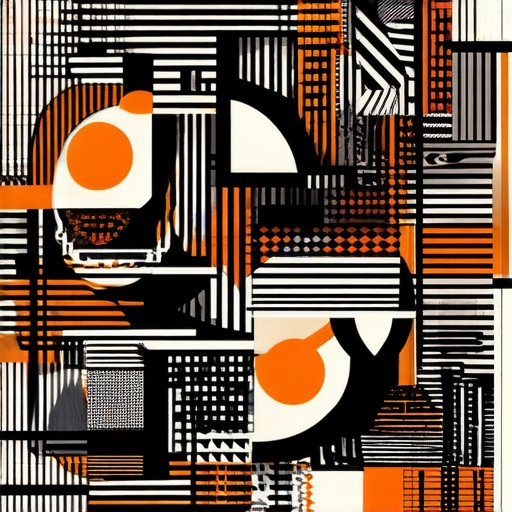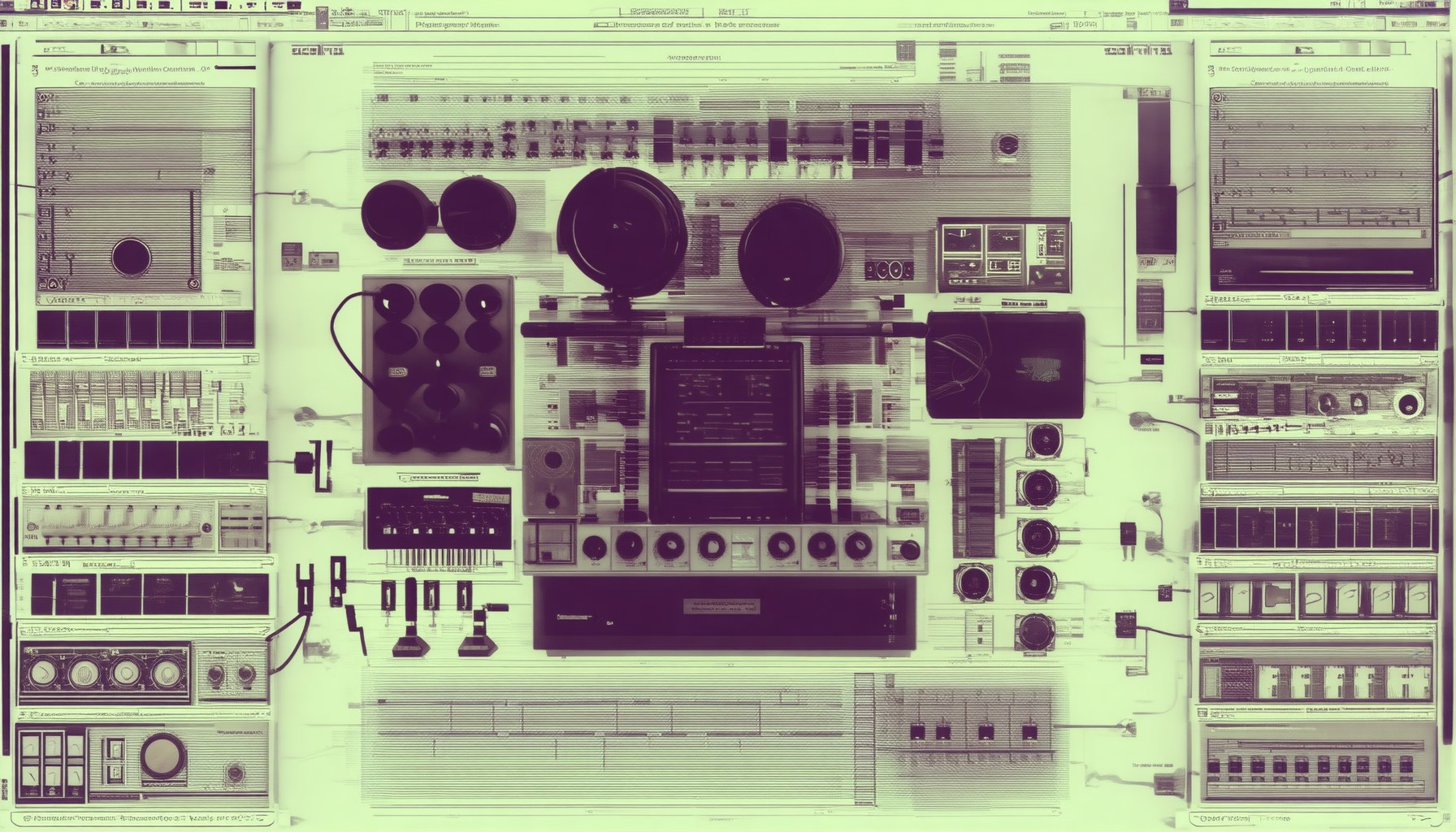Hip hop beats form the backbone of one of the most influential genres in modern music, serving as the rhythmic foundation that drives the culture, storytelling, and artistic expression of hip hop. From its roots in African rhythms to its evolution into a global phenomenon, the features of hip hop beats have transcended boundaries, influencing countless artists and audiences worldwide. Whether through intricate drum patterns, soulful melodies, or powerful basslines, the essence of a hip hop beat lies in its ability to convey emotion, energy, and stories untold. This article delves into the key characteristics that define hip hop beats, exploring everything from the fundamental elements to the techniques that shape the sound of this iconic genre.
Key Takeaways
– Tempo Variation: Hip hop beats range from slow, deliberate tempos (80-90 BPM) for storytelling to high-energy tracks exceeding 120 BPM.
– Rhythmic Foundation: A strong bassline and punchy drum patterns form the backbone, with elements like 808s and hi-hats adding depth.
– Melodic Elements: Beats incorporate melodic components via sampling and synthesis, enhancing emotional resonance.
– Diverse Subgenres: From trap’s dark atmosphere to boom bap’s classic rhythm, hip hop offers a wide array of styles.
– Collaborative Creation: Producer-artist partnerships ensure beats align musically and lyrically, enriching the final track.
– Cultural Impact: Hip hop beats transcend borders, serving as a universal language and evolving cultural expression.

What Are the Five Elements of Hip-Hop?
- Rhythm and Beat: The backbone of hip-hop, characterized by its distinctive drum patterns and basslines, often utilizing breakbeats pioneered by DJ Kool Herc.
- Lyrics and Storytelling: MCs use their verses to narrate stories, reflect on life experiences, or drop lyrical bombs showcasing their skill and social commentary.
- Sampling and Production: Artistic use of sound clips from various genres, combined with original compositions, creates the signature sound produced by producers like Quincy Jones and Pharrell Williams.
- Turntablism: The art of DJing, where turntablists manipulate vinyl records live, a cornerstone of hip-hop culture exemplified by legends like Afrika Bambaataa.
- Culture and Social Commentary: Beyond music, hip-hop encompasses a vibrant subculture addressing social issues, fashion, and urban life, often serving as a mirror reflecting societal challenges and triumphs.
What Are the Characteristics of Hip Hop Dance?
Hip hop dance encompasses a variety of styles and techniques that define its unique identity. Below are the key characteristics that make hip hop dance distinct:
- Rhythm and Timing: Hip hop dance heavily relies on rhythm and timing. Dancers emphasize syncopation and polyrhythms, often layering beats to create complex patterns.
- Footwork: Footwork is a cornerstone of hip hop dance, involving intricate patterns and movements that showcase control and precision over the feet.
- Storytelling Through Movement: Many hip hop dances tell stories or convey emotions, allowing dancers to express individual narratives or experiences.
- Improvization: Flexibility and adaptability are key traits in hip hop dance, as dancers often improvise routines based on music and mood.
- Social and Cultural Significance: Hip hop dance transcends mere entertainment; it has become a powerful tool for self-expression, empowerment, and community building.
- Cultural Influence: The genre draws from African, Latin, and Caribbean dance traditions, blending them with modern choreography to create something entirely new.
Hip hop dance continues to evolve, influencing various forms of popular culture and inspiring new generations of dancers worldwide. Its dynamic nature ensures that it remains a vital part of contemporary dance culture.

What Do Rappers Make Beats On?
Rappers and producers create beats using a variety of tools and software. Here’s a breakdown of the most common equipment and platforms they use:
- Digital Audio Workstations (DAWs):
- FL Studio: Known for its user-friendly interface and extensive plugin support, FL Studio is a favorite among beatmakers.
- Ableton Live: Offers a more modular approach with its warping and looping capabilities, ideal for creating dynamic beats.
- Logic Pro X: A professional-grade DAW with a wide range of instruments and effects, popularized by artists like Kanye West.
- Reason: Known for its intuitive interface and powerful sound design tools, Reason is a go-to for many producers.
- Hardware Samplers:
- Akai MPC Series: The MPC remains a staple in hip-hop production, offering classic drum sounds and sampling capabilities.
- Native Instruments Maschine: Combines a physical controller with software to create a seamless beat-making experience.
- SP4040: A popular sampler known for its robust feature set and reliability.
- Software Samplers:
- XLII VST: A favorite for its massive sample library and intuitive interface.
- Kontakt 5: Known for its extensive library of instruments and samples, Kontakt 5 is a versatile tool for producers.
- Hardware Synthesizers:
- Moog Subsequent 37/73: Renowned for their analog sounds and premium build quality.
- Roland JU-06x Series: Offers high-quality patches and a user-friendly interface.
- Korg MS-20: A classic synth with a reputation for unique and innovative sounds.
- Plug-ins and VSTs:
- Xpand!2: A versatile tool for creating everything from basslines to pads.
- Sylenth: A great synthesizer for thick bass and lead sounds.
- Reverb and Delay Plug-ins: Essential for adding depth and space to tracks, with options like Lexa Sound and MDA.
- Live Performance Gear:
- Akai MPC Live: A portable solution for live performances, combining a sampler and sequencer in one unit.
- Novation Launchpad: A popular MIDI controller for triggering loops and samples during live sets.
These tools and software options provide rappers and producers with the flexibility and creativity needed to craft compelling beats.

What is the tempo of rap?
The tempo of rap can vary significantly depending on the track, producer, and artist. Rap music typically ranges between 80 BPM (beats per minute) and 150 BPM, though this can fluctuate widely. The tempo is influenced by factors like production, artist style, and the overall mood of the song.
Key Points:
- The tempo can range from slow and deliberate to fast and energetic.
- Some producers opt for faster tempos to emphasize intensity and rhythm.
- Slower tempos may be used to allow more focus on lyrical delivery and storytelling.
- Tempo can affect the overall feel of the track, from mellow to high-energy.
Examples:
- Tracks with a slower tempo (around 80-90 BPM) might include introspective verses or storytelling.
- Mid-tempo tracks (100-110 BPM) balance energy with complexity.
- Faster tempos (120+ BPM) are common in high-energy performances and club anthems.
The tempo is ultimately determined by the producer’s vision and the artist’s delivery, creating a dynamic range of sounds within the rap genre.
What Are the Characteristics of a Hip Hop Beat?
A hip hop beat is a rhythmic pattern that forms the backbone of hip hop music, characterized by its strong, driving rhythms and infectious grooves. Here are the key characteristics that define a typical hip hop beat:
- Rhythmic Foundation :
- The beat typically relies on a solid bassline to provide the thumping low-end sound that is synonymous with hip hop.
- Drum patterns often feature heavy kicks, punchy snares, and sizzling hi-hats to create a sense of energy and momentum.
- Percussion Elements :
- Layers of percussion loops, claps, and other rhythmic sounds are added to enhance texture and complexity.
- The use of 808s (a specific type of bass drum sound) is a common feature in modern hip hop beats.
- Melodic Components :
- While the focus is often on the rhythm, melodic elements like chords, arpeggios, and hooks can be incorporated to add emotional depth.
- Sampling from various genres, including funk, jazz, and soul, is a staple in hip hop production.
- Tempo and Groove :
- Beats usually operate within a moderate tempo (around 90-120 BPM), though this can vary depending on the subgenre.
- The groove is often tight and locked, giving the music a sense of unity and cohesion.
- Layered Production :
- Producers use multiple layers of sounds to create a rich and full-bodied mix.
- Effects like reverb, delay, and echo are commonly applied to enhance the spatial quality of the beat.
- Cultural Significance :
- The hip hop beat has evolved over time, reflecting the cultural influences of its creators.
- It serves as a universal language, uniting audiences across different regions and generations.
- Instrumentation :
- Drums, synthesizers, and turntables are among the most frequently used instruments in hip hop production.
- Live instrumentation, such as live drums played by a drummer, is increasingly popular in contemporary hip hop.
- Diversity in Subgenres :
- From East Coast hip hop’s raw, street-style beats to West Coast hip hop’s smoother, melodic sounds, the beat can vary widely.
- Subgenres like trap, cloud rap, and lo-fi hip hop each have their own distinct sonic identities.
- Emotional Impact :
- A great hip hop beat can evoke feelings ranging from nostalgia to inspiration, depending on the producer’s intent.
- The interplay between rhythm and melody creates a powerful emotional experience for listeners.
- Collaborative Nature :
- Many hip hop beats are created collaboratively, with producers and artists working together to shape the final product.
- The collective effort ensures that the beat aligns musically and lyrically with the song’s content.
Understanding these characteristics helps in appreciating the artistry behind hip hop beats and how they contribute to the overall appeal of the genre.

What is the Rhythm of Hip Hop?
The rhythm of hip hop is the heartbeat of the genre, serving as the foundation for its infectious grooves and dynamic energy. This rhythmic framework combines elements of African drumming, funk, jazz, and electronic beats, creating a distinctive pulse that defines hip hop music.
Key Components of Hip Hop Rhythm
- Beats Per Minute (BPM): The tempo of hip hop tracks varies widely, ranging from slow, laid-back vibes (around 70-80 BPM) to high-energy tracks that reach up to 150 BPM or more. The BPM determines the overall feel and momentum of the song.
- Tempo: This refers to the speed or pace of the beat. A slower tempo allows for more emphasis on lyrical delivery and storytelling, while a faster tempo creates a sense of urgency and intensity.
- Syncopation: Syncopation is the offset of accents in a measure, often used in hip hop to create a sense of tension and release. This is achieved through offbeat hi-hat patterns, snare drops, and other rhythmic elements.
- Timing: Precision in timing is crucial for hip hop artists, as it allows for tight vocal deliveries, intricate scratching, and seamless transitions between beats.
Common Rhythms in Hip Hop
Hip hop encompasses a wide range of rhythms, each with its own distinct characteristics:
- Trap: Known for its dark, moody atmosphere, trap rhythm typically features heavy basslines, 808 drums, and a stripped-down snare sound. Artists like Future and Migos popularized this style.
- Drill: Originating from the UK, drill music features a fast-paced, aggressive rhythm with prominent basslines and sharp, cutting snares. Artists such as Skepta and Stormzy are known for this style.
- Lo-Fi: Lo-fi hip hop focuses on a raw, organic sound with minimal production. The rhythm often feels gritty and unpolished, emphasizing simplicity and authenticity.
- Boom Bap: Classic hip hop often relies on a boom bap rhythm, which includes deep, punchy bass drums and crisp, clapping snares. This style is heavily influenced by old-school artists like Nas and Jay-Z.
The Role of Rhythm in Hip Hop Culture
The rhythm of hip hop goes beyond music—it’s embedded in the culture and language of the genre. From DJ scratch patterns to MC freestyling, rhythm is a core element of rap battles and live performances. It allows for creative expression and competition among artists, showcasing their ability to manipulate and adapt to the beat.
Conclusion
The rhythm of hip hop is a powerful force that drives the genre forward, blending tradition with innovation. Whether it’s the hypnotic patterns of trap music or the precise timing of boom bap beats, the rhythm is what makes hip hop uniquely vibrant and alive.





0 Comments